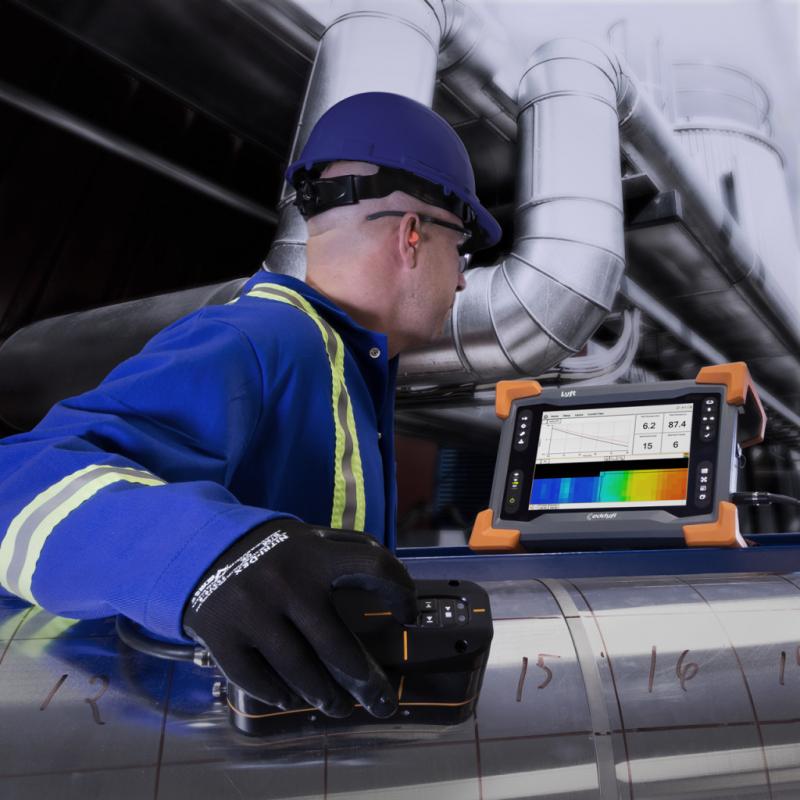
Pulsed
eddy current (PEC) technology uses electromagnetic induction to inspect
corrosion of ferromagnetic material without the need to make contact with the
material’s surface.
Provides
a relative wall thickness measurement through liftoff:
·  Non-metallic pipe
protection (concrete, composite wraps coatings,
and more)
·       Â
External
corrosion product
·       Â
Corrosion under
insulation (CUI)
·       Â
Marine growth
Â
PEC
inspect through insulated structures, protected or not with weather jacket
Supports aluminum, stainless or galvanized steel weather jackets
·       Â
Inspect wall
thickness up to 100mm (4in)
·       Â
Supports
liftoff/insulation/coating thickness up to 300mm (12 in)
Pulsed
Eddy Current Testing can be applied on
·       Â
Insulated vessels
and columns
·       Â
Insulated storage
tanks and spheres
·       Â
Insulated piping
systems
·       Â
Offshore risers
protected by neoprene
·       Â
Structural
applications with fireproofing
·       Â
Annular rings of
storage tanks.
                       Benefits
of Pulsed Eddy Current Testing
No need to remove and restore coatings, paint, or insulation
No time or money spent removing corrosion, dirt, or scale
No need for extensive scaffolding since equipment can often be
operated through rope access, on extension poles, or by robotic crawlers.
Additionally,
monitoring the wall thickness of critical equipment while it is in service
extends equipment run times and reduces both the frequency and duration of
shutdowns.
